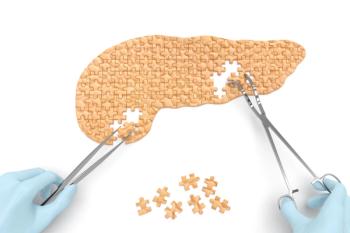
Influence and Clinical Continuum of Cancer Inequity in the United States
Some factors that influence the inequities in cancer care include historical, structural, systemic, and interpersonal factors.
Inequities in cancer care are influenced by intersecting drivers of health and health care, solutions for which may necessitate multifaceted approaches such as addressing political determinants, engaging community-driven initiative, increasing diversity of the medical workforce, and increasing enrollment in clinical trials, according to findings published in Hematology/Oncology Clinics of North America.1
Despite improvements in incidence and mortality in certain cancers in the United States, disparities such as those at the individual and community levels, including but not limited to socioeconomic status, race and ethnicity, and disability status have raised concern about the gaps in care and the historical context that influences the landscape of these inequities.
A team of researchers highlighted these disparities by reviewing the historical factors that influenced current health care, outlining examples in present day settings, and providing possible community-grounded and action-oriented approaches in cancer care.
The systematic and structural disparities in the incidence of treatment of disease have been long-standing factors contributing to the inequality of health and health care in the United States, namely by poor and Black communities. Other driving factors that have been published in the literature include discrimination in life insurance coverage, lack of access to high-quality hospitals, lack of diversity in medical schooling and ultimately in the health care workforce, and disparities in community education, public health infrastructure, socioeconomic stresses, and in poor diet and access to quality foods.
In addition to socioeconomic challenges faced by many, the lack of universal health care coverage in the United States leads to more inequalities. The authors noted that nearly 27.5 million Americans younger than 65 years are still living without health insurance coverage after the implementation of the Affordable Care Act in 2010.
“The variation in payors, covered services, participation by health systems, and costs to patients results in a system that is fragmented, difficult to navigate, and fraught with inefficiencies, often resulting in under-insurance for patients, variation in health care utilization, and discrepant spending," the authors wrote. "These challenges are compounded for patients who face the uncertainty and complexity of multidisciplinary cancer care, with consequences ranging from financial toxicity and increased stress to increased mortality for marginalized populations across the country."
Factors reflecting demographics, income, race, ethnicity, language, gender identity, age, and many others have led to gaps in cancer care, and while health and cancer inequities often present in tandem with one another, they are not fixed entities. Instead, they are molded by systems, structures, and policies, as well as personal choices and interpersonal dynamics. These political determinants then further influence social determinants of health such as education, housing, employment, neighborhood environment, food availability, and transportation. These social factors then, in turn, influence the individual’s primary and specialty care, overall health, potential for chronic conditions, and life expectancy.
Interpersonal drivers in marginalized patients can also influence how patients are treated in a health care setting. For example, the authors note that marginalized patients are more likely to have delayed access to care and are less likely to receive appropriate care even when they are at the same stage of illness as others from nonmarginalized groups. Experiencing racism or bias in the clinical setting has been linked to decreased completion of recommended services, as well as to a several physiologic and possible intergenerational physiologic changes.
“Racism is associated with increased cortisol levels, increased insulin insensitivity, and decreased telomere length," the authors said. "The rise of epigenetic, multi-omic, and microbiome sciences are further elucidating the ways in which social and moral drivers, like racism, have fundamental physiologic manifestations within the human body."
For males in the United States, the incidence of cancer has remained relatively stable with nearly 449.4 new cases per 100,000, which incidence in females has slightly increased to 423.3 new diagnoses per 100,000 people. The most common cause of cancer in men and women are prostate cancer (29%) and breast cancer (31%), respectively. Lung and colorectal cancers are the second and third most common cancers in both men and women. Due to persistent disparities, non-Hispanic Black communities have higher rates for nearly all cancers, especially for prostate, colorectal, liver, gastric, and lung cancers in Black men.
However, while the overall rates for prostate, lung, and colorectal cancers have been declining for men, there has been a significant shift in incidence of earlier-onset colorectal cancer in younger male populations (<50 years at diagnosis). These findings are especially predominant in White patients while these rates have stabilized for non-Hispanic Black patients, leading to uncertainty regarding disproportionate increases and future trends in colorectal cancer incidence.
“Lower socioeconomic status and lack of insurance in the United States are consistently shown to be associated with later stage cancer at the time of diagnosis,” the researchers noted. They also added that several studies have indicated that insurance expansion is linked to earlier and less emergent diagnoses of stage I breast cancer, colon cancer, and lung cancer. Earlier diagnosis is dependent upon both preventive services and screening for the appropriate cancer, both of which are decreased in marginalized communities that have a less awareness of specific cancer risks and behavioral contributors. Moreover, these populations also have larger gaps in screening for certain cancers such as cervical, breast, and colorectal cancers, which can be due to low levels of English proficiency, low health literacy, and limited transportation.
In addressing inequities in receipt of care cancer treatment, the investigators noted that uninsured patients and low-income patients are less likely to receive guideline-concordant care, even when presenting with later stages of cancers. For solid organ malignancies, uninsured patients are also unlikely to receive cancer-directed surgery for breast, colon and rectum, and lung malignancies. Patients from lower socioeconomic status or rural areas may also be less likely to receive cancer-directed surgery. “Additionally, the referral patterns and site of care delivery also play important roles in gaps in cancer-directed surgery, with uninsured, low-income, and marginalized patients having lower likelihood of being evaluated by a surgical specialist or at a high surgical volume facility,” the authors wrote.
Moreover, receipt of guideline-recommended multidisciplinary approaches to cancer treatment such as surgery, chemotherapy, and radiation are not as likely to be given to those from low-income or marginalized communities. Unfortunately, many mission-driven clinics and institutions that aim to provide care to low-income and marginalized communities are, themselves, under-resourced due to lack of funding.
Aside from guideline-concordant cancer-directed treatment options, other outlets to provide better care for undertreated populations are also lacking such as in clinical trials, in palliative care, and in hospice. Efforts to erase decades of structural racism in clinical trials are being implemented with increased access to trials across North America. It is essential that all patients are able to benefit from “potentially cutting-edge therapeutics” and that the science backing these studies is using data to represent all communities. End-of-life and survivorship care, which often represent the later aspects of cancer care, are still not equally distributed across communities, namely in rural places of residence and in low-income or marginalized communities.
Overall cancer survival has increase in the United States, yet even with increased insurance coverage gaps still exist. For example, while overall cancer survival has increased across demographics, there is still a considerable gap in survival between White populations and non-Hispanic Black populations.
“Similarly, the introduction of newer screening or treatment options may have overall benefit, especially for better-insured and White populations, but their asymmetric introduction, uptake, or use has the potential to simultaneously introduce new racial or socioeconomic disparities,” the researchers wrote.
Approaches to addressing these inequities are multifaceted and range from government policy to health care development. Health policy changes such as the Affordable Care Act have started to shift the approaches in the clinical continuum, but state-based insurance expansion and funding for systems addressing social determinants of health are also needed. The care redesign suggested by the authors included the use of alternative payment models, equity-oriented interventions to close racial disparities, and increased navigation services at cancer centers. They also suggested increasing the pipeline of future oncologists through community engagement, scholarships, and addressing institutional discrimination to promote a more diverse health care workforce that can better treat patients in underrepresented communities.
Lastly, they noted current and future approaches to cancer care research such as the Clinical Treatment Act, community trials networks to expand access and to diversify clinical trials, the development of pragmatic trial designs, and transdisciplinary research bridging upstream and downstream drivers and outcomes.
“Cancer inequity in the United States spans the clinical continuum and is influenced by historical, structural, systemic, interpersonal, and intrapersonal racism and oppression,” the researchers concluded. “These gaps in cancer outcomes exist for marginalized populations from increased incidence of select cancer, later stage at diagnosis, decreased receipt of cancer-directed therapy, and worse survival. Understanding [political determinants of health] and [social determinants of health] and causal framework is important for strategically ensuring equity in cancer care in the United States."
Reference
1. Loehrer AP, Green SR, Winkfield KM. Inequity in cancer and cancer care delivery in the United States. Hematol Oncol Clin North Am. Published online September 4, 2023. doi:10.1016/j.hoc.2023.08.001
Newsletter
Pharmacy practice is always changing. Stay ahead of the curve with the Drug Topics newsletter and get the latest drug information, industry trends, and patient care tips.











































































































































































































